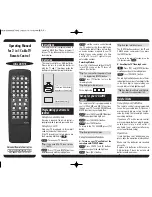
OPERATION:
There are several models of capacitor carts which all use the following steps. You should
check the operation label on your cart for specifics.
1.
Check the capacitor's state of charge by rocking the voltmeter switch to the Left and
holding.
•
For optimal operation the gauge should read in the green band. With dual voltage
cart the gauge should read 13v-14v in 12volt mode and 25v-28v in 24volt mode.
•
CAUTION
must be taken
NOT
to push the push-button or remote switch or the
cables will be live. The cables
MUST NOT BE CONNECTED OR DISCONNECTED
while they are live.
2.
Ensure that the vehicle you are going to jump-start is the
same voltage as your cart (i.e.
12v to 12v and 24v to 24v, dual voltage cart make sure the correct voltage is selected).
3.
Connect the RED cable clamp to the positive (+) battery post and the BLACK cable
clamp to the negative (-) battery post or a good ground.
4.
The cart is wired for polarity protection, a buzzer will sound and the LED will be RED if
clamps are put on backwards. The cart will remain inoperative until the problem is
resolved.
5.
After proper cable hook-up is achieved, the LED will be GREEN.
6.
Rock the voltmeter switch to the right. This gives you the reading of the battery voltage
of the vehicle to be jump-started. This also allows the cart to be used.
7.
Unwrap the momentary Push button switch and get into the vehicle to be started.
8.
Perform the vehicle's normal start procedure. Engage the Push button switch and than
immediately engage the starter.
•
The engine should crank immediately.
9.
When the engine starts and is running on its' own, keep the Push button switch
engaged for 15-30 seconds to recharge the capacitor(s).
•
If the engine does not start in 12-seconds of cranking time there may be other vehicle
problems unrelated to battery power.



























